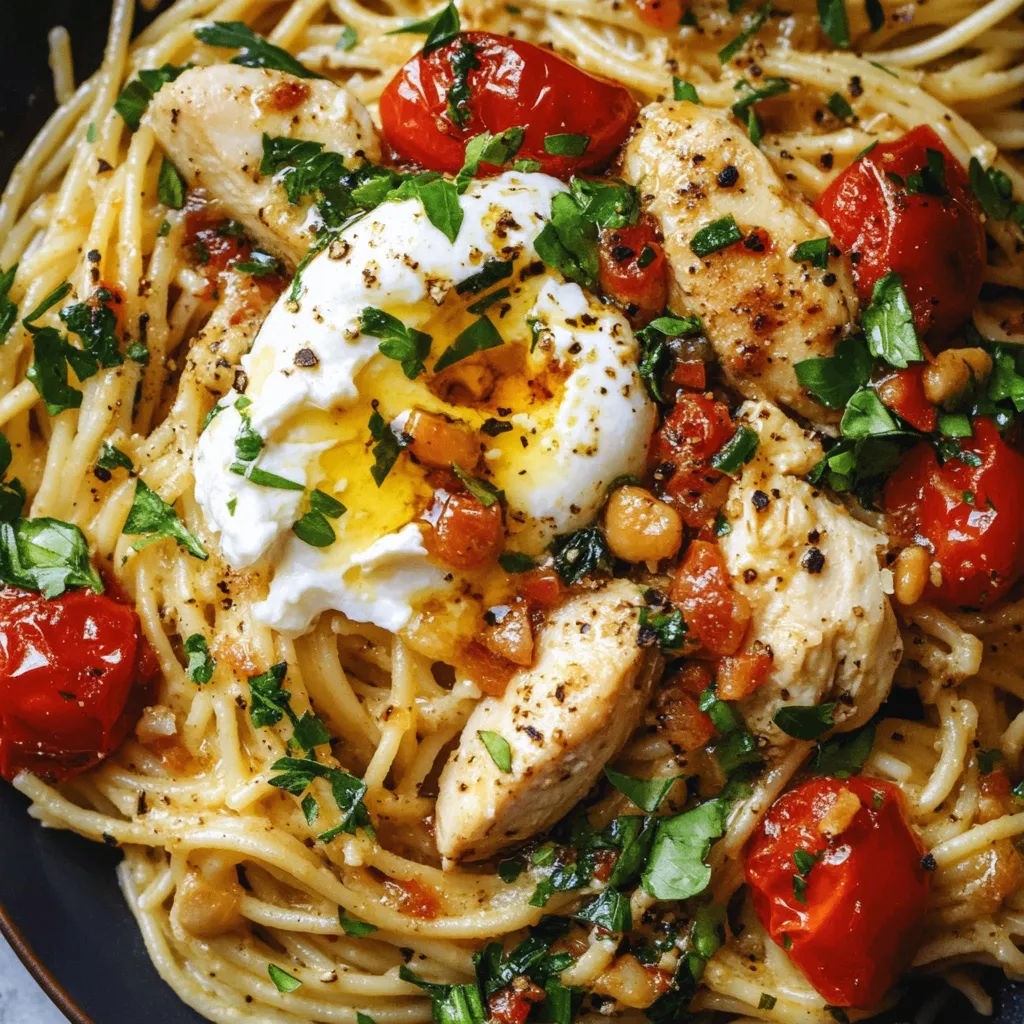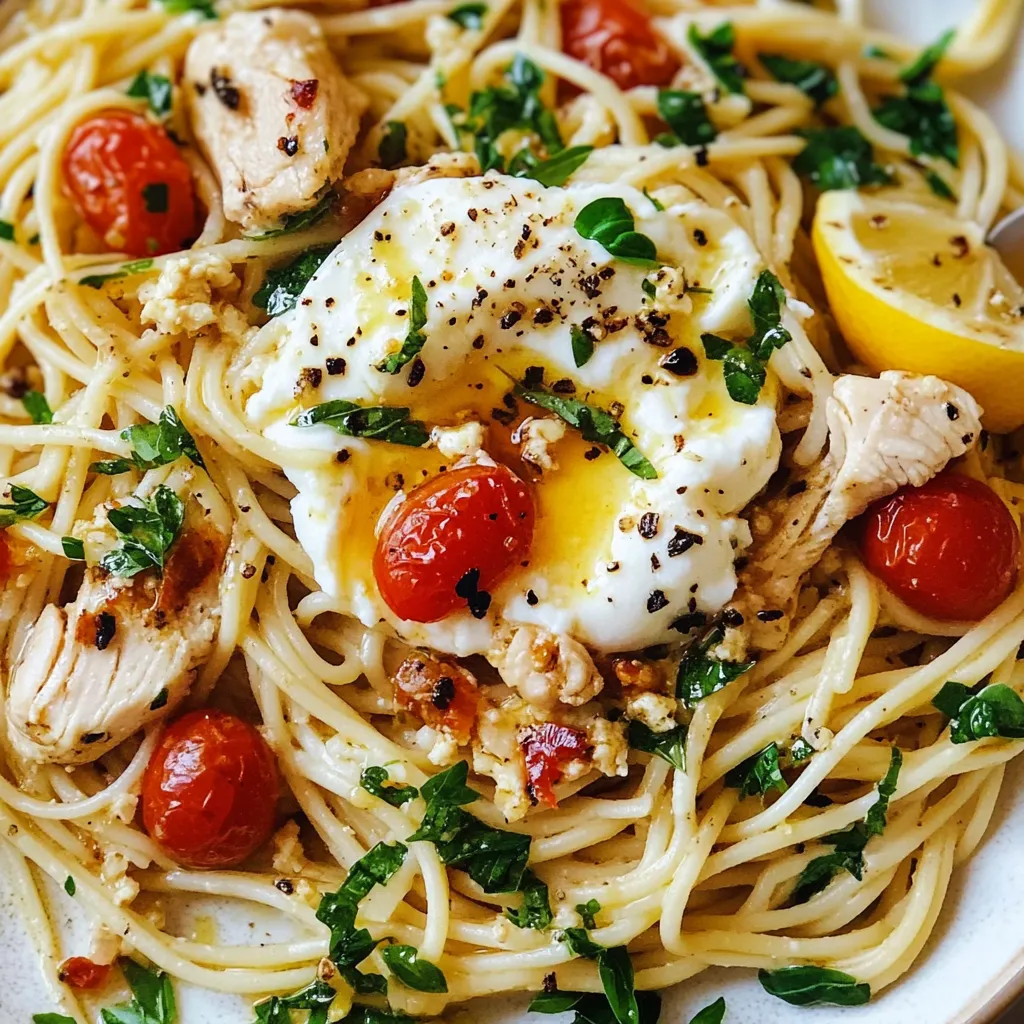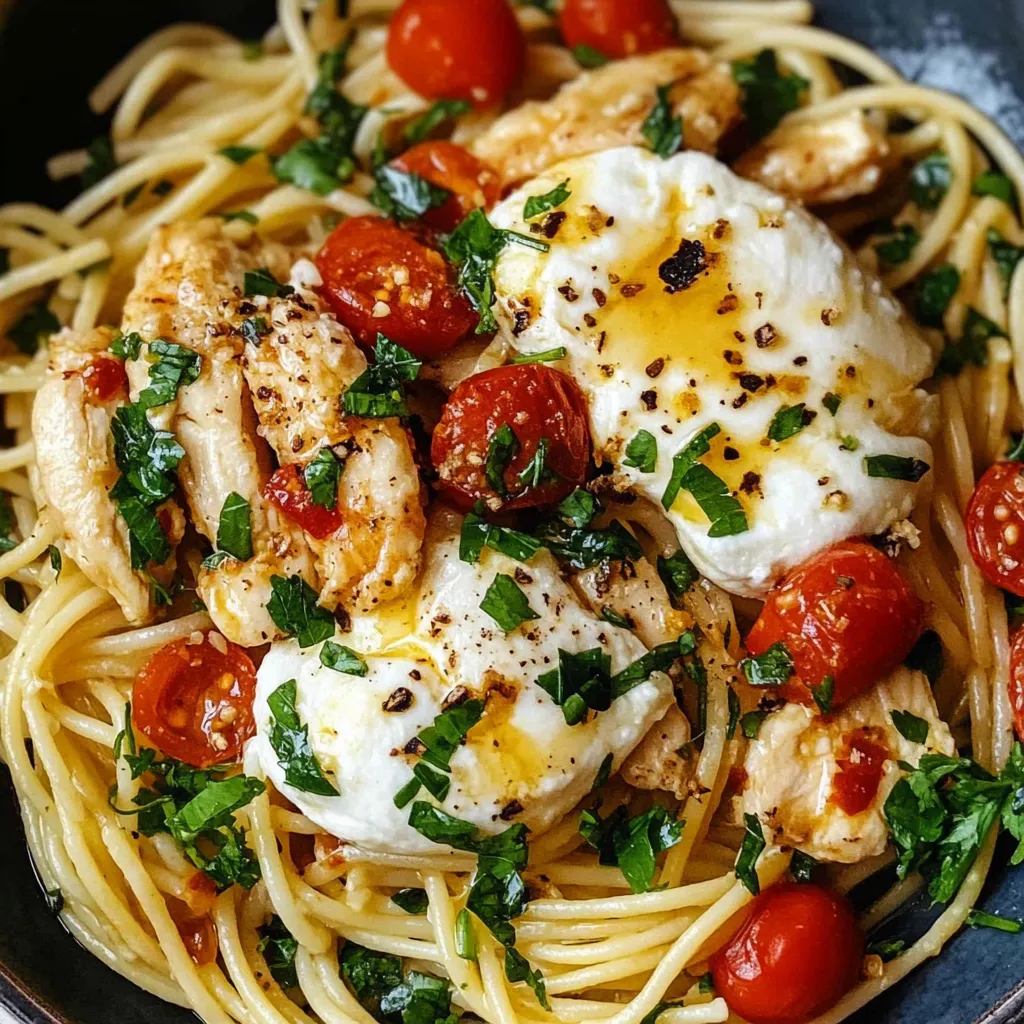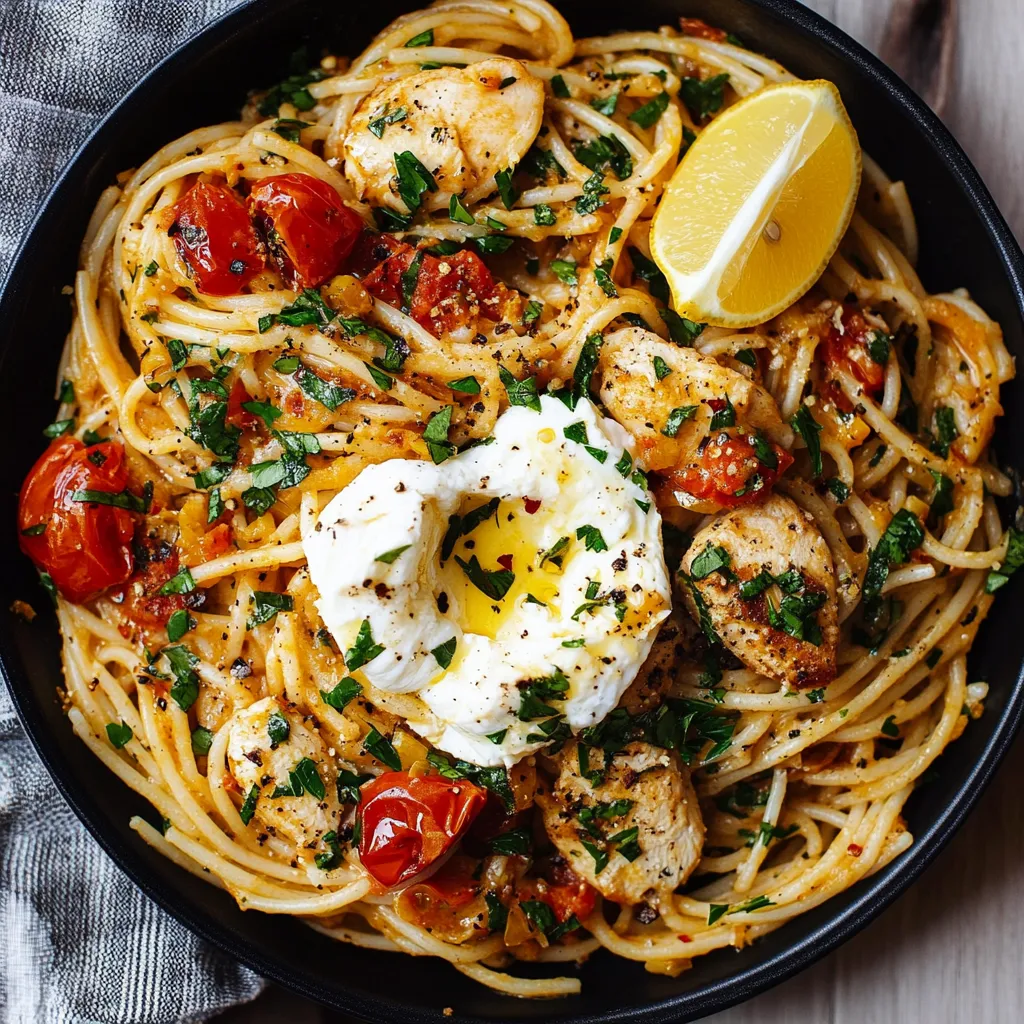 Pin it
Pin it
The art of balancing creamy burrata with bright lemon and garlic creates an elevated pasta dish that's both comforting and sophisticated. This fusion of Italian-inspired flavors transforms simple chicken spaghetti into something memorable, where each component plays a crucial role in the final harmony.
Last night when I served this, the kitchen filled with the aroma of garlic and lemon as the burrata slowly melted into the hot pasta, creating irresistible strings of cheese with every forkful.
Essential Ingredients and Selection Tips
- Burrata - Look for fresh burrata packed in water. It should feel firm on the outside but soft and creamy within
- Lemons - Choose bright, heavy fruits for maximum juice. Organic is best when using zest
- Garlic - Fresh cloves only; pre-minced won't provide the same depth of flavor
- Pasta - High-quality bronze-die pasta holds sauce better in its rougher texture
Detailed Cooking Instructions
- 1. Perfect Chicken Preparation
- Start with room temperature chicken for even cooking. Press lightly with paper towels to remove excess moisture. Season generously, allowing spices to adhere well before hitting the hot pan.
- 2. Sauce Building
- Keep heat medium-low when making the sauce. High heat can break the emulsion and cause graininess. Add cream slowly while whisking constantly to ensure smooth incorporation with the lemon.
- 3. Pasta Perfection
- Cook pasta one minute less than package directions for ideal texture. Reserve a cup of pasta water before draining - this starchy liquid helps create a silky sauce.
- 4. Final Assembly
- Work quickly during final assembly to ensure the burrata melts perfectly. The residual heat should gently warm the cheese without completely liquefying it.
 Pin it
Pin it
In my kitchen, this dish evolved from a simple weeknight meal to our favorite "special occasion" pasta, proving that sometimes the most impressive dishes are also the most straightforward.
This recipe represents the beauty of Italian cooking - letting quality ingredients shine through simple preparation. The way the creamy burrata slowly melts into the lemony sauce creates moments of pure culinary joy that make cooking such a rewarding experience.
Seasonal Adaptations and Variations
Spring invites fresh peas and asparagus to the dish, while summer calls for cherry tomatoes and fresh herbs. Autumn welcomes butternut squash or mushrooms, and winter sees the addition of roasted garlic and sage. The versatility of the lemon butter base allows for endless seasonal modifications. I've found that adding seasonal vegetables not only enhances the nutritional value but also creates exciting texture variations that keep the dish interesting throughout the year.
Perfect Wine and Side Pairings
A crisp Pinot Grigio or unoaked Chardonnay complements the creamy sauce without overpowering the delicate burrata. For sides, consider grilled asparagus in spring, a light arugula salad in summer, roasted Brussels sprouts in fall, or garlic-roasted broccoli in winter. The key is balancing the rich pasta with lighter accompaniments. A slice of crusty bread for sauce-soaking is always welcome.
 Pin it
Pin it
Make-Ahead Strategies
Prepare components separately for easy assembly: cook and slice chicken, make the sauce (minus cream), and prepare pasta just shy of al dente. When ready to serve, reheat sauce gently while adding cream, toss with warmed pasta and chicken, then add burrata last. This approach works beautifully for entertaining, allowing you to spend more time with guests rather than in the kitchen.
Storage and Reheating Tips
Store leftover pasta and chicken separately from burrata in airtight containers for up to three days. When reheating, add a splash of cream or pasta water to revive the sauce. Warm gently over medium-low heat, stirring occasionally. Add fresh burrata just before serving - never reheat the cheese. The pasta may need a fresh squeeze of lemon and crack of pepper to brighten flavors.
Troubleshooting Common Issues
If sauce breaks, lower heat immediately and whisk in warm pasta water gradually. For too-thick sauce, thin with pasta water; for too-thin, simmer gently until reduced. If burrata doesn't melt properly, ensure pasta is still quite hot and let cheese come to room temperature before adding. Prevent dry chicken by not overcooking initially - it will continue cooking slightly when returned to the hot pasta.
 Pin it
Pin it
Final Reflections: This elegant pasta dish proves that simplicity, when executed with care, creates the most memorable meals. The way the creamy burrata slowly melts into the bright lemony sauce, coating each strand of pasta, transforms humble ingredients into something extraordinary. Through countless iterations in my kitchen, I've learned that success lies in respecting each component while allowing them to work together harmoniously.
Frequently Asked Questions
- → Can I substitute the burrata?
- Fresh mozzarella can work, though burrata's creamy center makes it special. Ricotta is another option.
- → Why is my sauce splitting?
- Keep heat low when adding cream and don't let it boil. If it splits, whisk in a little hot pasta water.
- → Can I use chicken thighs?
- Yes! Boneless thighs work great and stay juicier. Just adjust cooking time accordingly.
- → What pasta shapes work best?
- Long pasta like spaghetti, linguine, or fettuccine works best to hold the creamy sauce.
- → Can I make this ahead?
- Best served fresh, but you can prep components ahead. Add burrata just before serving.
